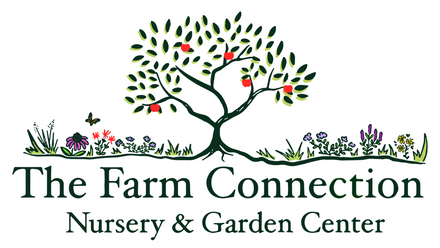Fall isn’t just for planting color, it’s the perfect season to sow medicine into your garden.
Perennial medicinals come back year after year, support pollinators, and build resilience for homesteads. Many of these plants aren’t just healing for people, they also provide nectar, pollen, seeds, and habitat for pollinators, migrating birds, and beneficial insects, creating a thriving ecosystem in your backyard.
Medicinal Perennials to Plant This Fall
- Echinacea (Coneflower): Immune support for humans; blooms attract pollinators and provide seeds for birds.
- Tulsi (Amrita): Adaptogen and immune-support herb; leaves can be harvested for tea, while flowers attract pollinators.
- Monarda (Bee Balm): Tea and antimicrobial uses; a magnet for pollinators and hummingbirds.
- Comfrey (Bocking 4): Used in salves and for compost; flowers nourish pollinators, roots are excellent for soil health.
- Calendula: Soothes skin; flowers and seeds support insects and small birds.
- Yarrow: Circulation support for humans; hardy blooms provide nectar and late-season forage for pollinators.
- Blue Vervain: Used for stress relief; thrives in moist areas and attracts beneficial insects.
- Skullcap: Nervous system support.
- Lyre Leaf Sage: Respiratory aid.
- Wild Quinine: Fever support.
- Greek Mullein: Cough and respiratory support.
- Elecampane: Lung and digestive support.
- Chamomile: Soothing tea and sleep aid.
- Feverfew: Traditionally used for headache relief and anti-inflammatory purposes; flowers support pollinators and beneficial insects.
- Willow: Natural source of salicylic acid for pain and inflammation relief; bark and leaves provide habitat and food for pollinators and wildlife.
- Stinging Nettle: Traditionally used for inflammation, allergies, and as a nutrient-rich tonic; supports pollinators when flowering.
- Red Sage (Dan Shen): Supports cardiovascular and circulatory health; flowers provide nectar for pollinators and beneficial insects.
- Milkweeds (Asclepias): Not a medicinal, but essential for monarchs and pollinators; supports ecosystem health.
Tips for Planting Now
Plant medicinal perennials before the first frost so roots can establish, even as top growth slows. Fall’s mild temperatures and steady rainfall give these plants a head start for vibrant spring growth.
Fertilizing: Use low-nitrogen, phosphorus- and potassium-rich amendments such as bone meal, rock phosphate, or our in-house Fall Remineralizing Blend.
Mulching: Apply a light layer for winter protection.
Mint-Family Caution: Many of these natives, including Skullcap, Monardas and Lyre Leaf Sage, are in the mint family and can spread aggressively. Plan spacing carefully and consider container planting.
Field vs. Garden: Plants like Comfrey, Showy Milkweed, and Echinacea do best in larger beds or open fields, while Calendula, Elecampane, and Wild Quinine are more upright, clumping, tidy in beds and borders. Mints, Skullcap, and Chamomile thrive in containers.
Harvesting Roots vs. Aerial Parts: Roots are typically harvested from Comfrey, Elecampane, and Greek Mullein. Leaves and flowers, used for teas, salves, and tinctures, come from Echinacea, Monarda, Calendula, Yarrow, and Skullcap.
Planting medicinal perennials now gives your garden an early start to strong roots, a pollinator-friendly habitat, and a resilient, multi-use landscape ready to flourish next spring and beyond.


1 comment
Will you have bare root trees at the WNC Farmers Market tomorrow?